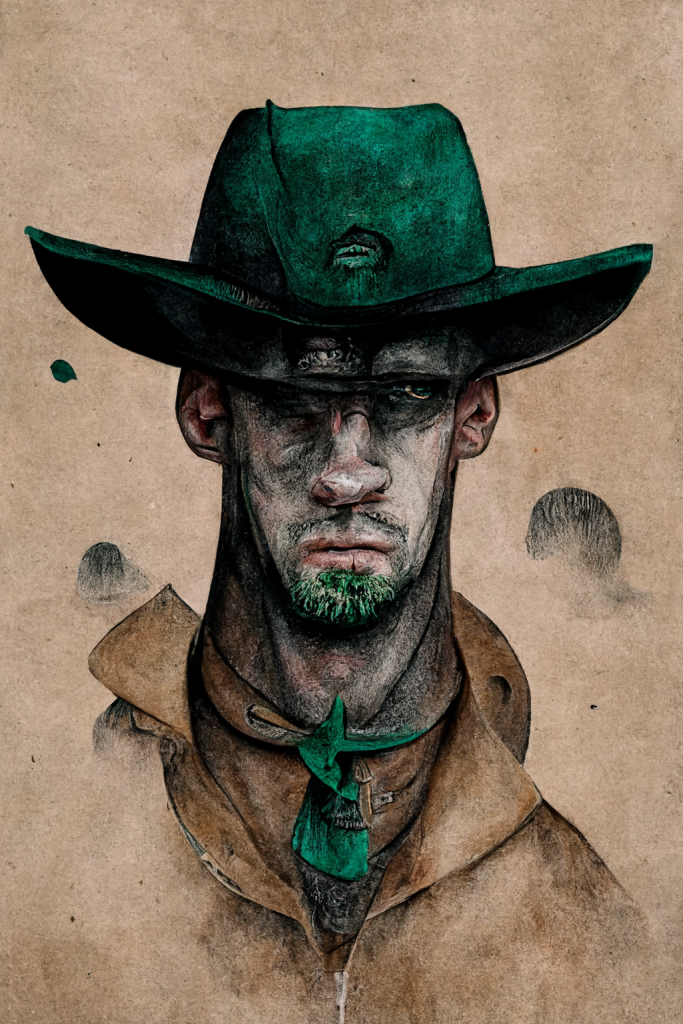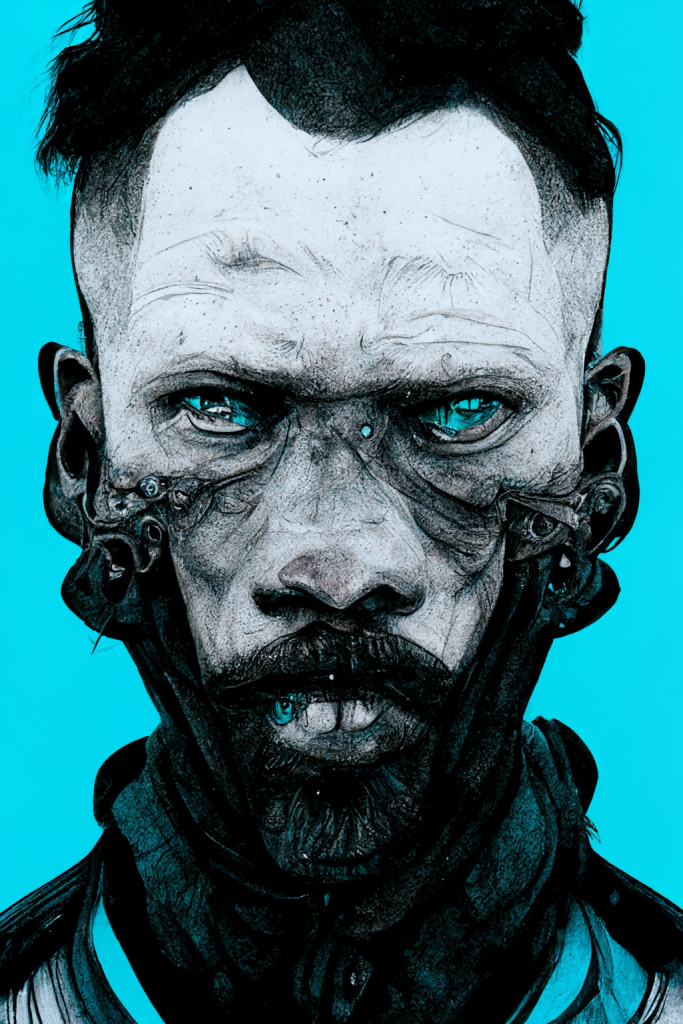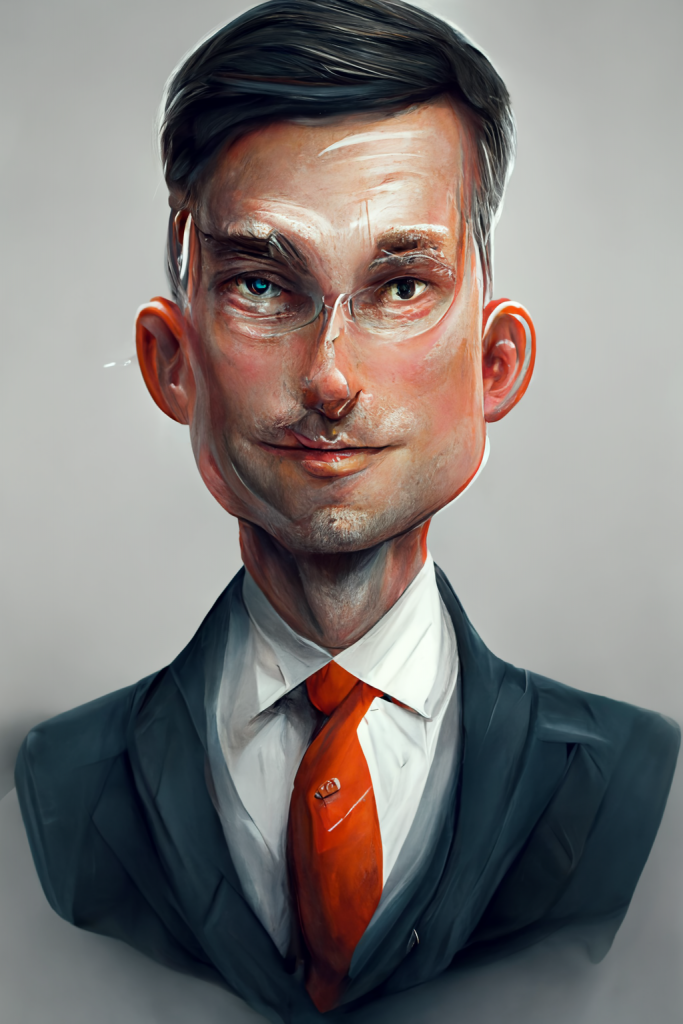As a game designer and player who has writing skills, a background in graphic design, and no drawing ability, I've constantly dealt with the fact that I can't produce artistic elements to complement my work. Most of the figures I use are stock-art. There's a limit to how far that can go, especially if your budget is low to the point of being practically zero. I've had excellent results using Midjourney for character portraits, though I'm still working on other types of output.
Midjourney is an AI image generator. Feed it a line of text, and you can get an image. It can use images as a prompt, but I'd like to experiment with it more before writing about that.
Using Midjourney for character portraits is simple, though I suggest coming into it with some background in photo editing. I use Affinity Photo, which is cheap and has neat features. An open-source program like GIMP or Krita will probably work just as well.
This is something you'll use to polish your portraits (part 3 of this series), which will
Setting up Midjourney
At the time of writing, Midjourney is in beta. This link leads to my profile over there, but if you're not in the program it'll just give you a place to sign in and a place to sign up for the beta. Feel free to sign up for the beta. It took me a week or two to get in. People who subscribe to MidJourney get guest passes, but I've already used all of mine. You get more eventually, but not yet. In the gallery, you can see both images and the prompts that made them. If you're a subscriber check it out if you want more detail than I can fit here.
Midjourney gets prompts from Discord. When in the Midjourney Discord server or in DMs with the bot (for subscribers), send a prompt with /imagine.
If you don't have Discord, you're out of luck. However, Discord is free, so you can simply make an account.
Once you get an invite, you're in the program. Free users get 25 images (ever!) so think about what you want to do. In addition, all memberships include a commercial license. Trial users have somewhat different rules about how they can use output.
What is a Prompt?
A prompt is a text that gives the AI ideas. There's no right or wrong here (at least, not that is absolute), but you can think about a few things.
One is that Midjourney's training data set includes a lot of descriptions of images. Using things like 4k, beautiful, and so forth in your prompt push it to that part of the dataset. That's important, because a lot of things are going to depend on how it goes.
You can use an image as a prompt for MidJourney, but it only does style transfer. This means that it will try to mimic the style of the image, but not its subject. If you wanted to apply a style to an existing image, MidJourney is not the tool for you.
At the beginning of the prompt, put any image sources you'd like to use. This should be a URL. Make sure it's available somewhere the Discord bot can pull it down and feed it to Midjourney.
https://midjourney.gitbook.io/docs/imagine-parameters
Fast and Relaxed
There are two modes for Midjourney: Fast and Relaxed. Most of the time you're in Fast mode. If you're a Standard member ($30/month at the time of writing), you get access to the Relaxed mode.
Fast mode uses up credits, and goes pretty quickly. Fast mode supports larger upscaling and runs with priority. However, it only has limited access.
Relaxed mode does not use up credits, but only runs at low GPU load. I've rendered more than a thousand images in two days in relaxed mode, so it's not a slouch. However, you will tend to get output in bursts. I wasn't paying attention to how long fast rendering takes, but relaxed rendering definitely takes longer.
Things I Use Often
For characters, I strongly suggest using the --uplight parameter. The standard upscaler adds more details to scenes and objects, but when you want an illustration of a face this can be an undesirable level of detail. This is a stylistic choice, and helps with the cleanup.
I often work in a 2:3 aspect ratio (--ar 2:3 as an argument, though I have a shortcut I call --hdportrait that combines this with --uplight). The aspect ratio can cause problems sometimes, especially with adding color or features in places it shouldn't, so if a prompt isn't working I'll experiment with taking that aspect ratio off (just leaving it default), but usually keep --uplight to remove excess ("garbage") data from being added.
This isn't to say that all styles should have light upscaling. Photorealism often does pretty well with it, since you want more details. However, full-weight upscaling tends to lead to the "ai-generated" look you'll be familiar with if you've seen a lot of things rendered with AI in the past.
Light upscaling gives less detail. Depending on what you're mimicking, that should be fine.
Things I Don't Use
I try not to base any images off the style of a single living artist.I've done a couple as a test, but generally use generic styles. I'll base off of a studio style, such as Pixar or Studio Ghibli. Those are well-known and imitated already. However, my favorite images come from just giving instructions to the machine and letting it make the style.
Midjourney won't replace the great masters. It still strikes me as a little scuzzy to use it to take others' work by name.
Likewise, I don't use anyone else's copyrighted images as a style-transfer source. This applies to anonymous commercial and named artist work.
I don't really use image prompts. I should use more, because they seem handy for replicating a style you liked in previous outputs with new prompts.
Base Output
In the next post of this series, we'll look at how to set up the best possible prompts. For now I want to give some examples of raw portrait output from various prompts. Some of these use different methods, but I'll include the basic prompts. The only things you might need to add to replicate these are the aspect ratio and light upscaling method, though not all of them use this.
These are all portraits I generated using MidJourney. I've included a caption with the prompt for each, though it should also be on the filename.

character portrait featuring a pale sturdy man in a duster and floppy cowboy hat, facial detail, trending on artstation, elaborate dark green ink illustration, matte paper, post-apocalyptic, ugly, shading

character portrait featuring a rogue, intricate designs ,trending on artstation,elaborate dark cyan ink illustration, gold.png

character portrait of a female cyberpunk gunslinger in pop-art style

character portrait of a female cyberpunk gunslinger in pop-art style

character portrait, a mutant, male, facial detail, trending on artstation, pale, elaborate cyan ink illustration, black matte paper, post-apocalyptic, beautiful, shading.png

character portrait, an old scavenger woman, facial detail, trending on artstation, elaborate sepia ink illustration, black matte paper, post-apocalyptic, beautiful, shading.png

character portrait, corporate art style
In the next post, I'll go into more detail about prompts, what I've found works, what I found gives issues, and how to generally guarantee the best possible result.
Posted from my blog with Exxp : https://loreshapers.net/midjourney-for-character-portraits-setup